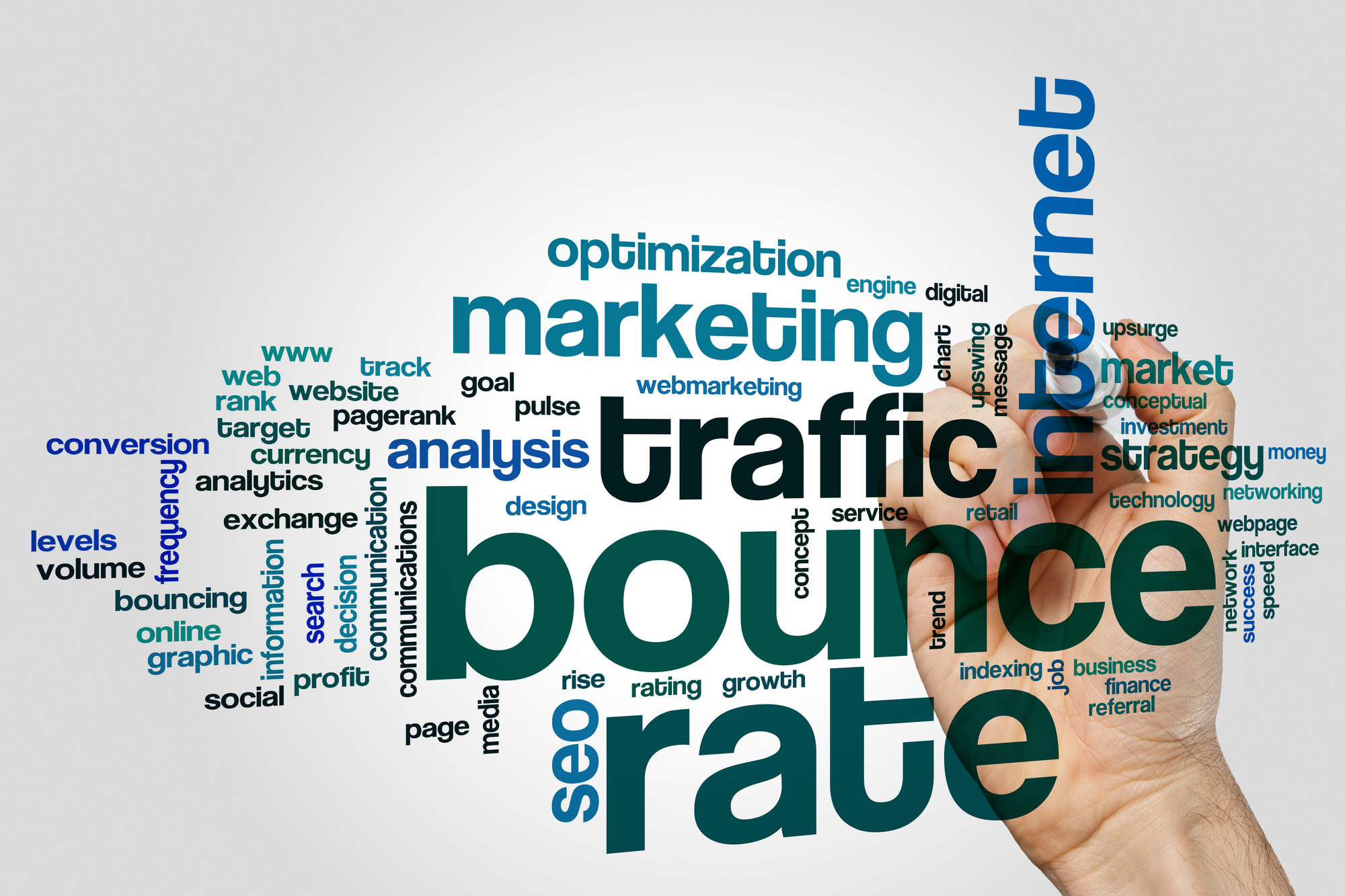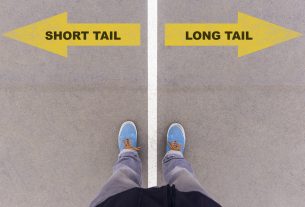How sure are you that people who visit your site get what they want before they leave?
Aside from the amount of traffic you’re getting, Google also tracks the bounce rate of your web pages to get a more accurate picture of your website’s performance. The bounce rate is the percentage of visitors who enter your website and then leave immediately after viewing only one page.
So, what’s a good bounce rate?
In general, a bounce rate below 20% is incredibly hard to achieve. If you’re getting below 10%, though, there’s something suspicious going on with your website.
That said, what rate is too high? What’s the limit to shoot for? Will page speed and longer page content affect your bounce rate and other SEO metrics?
Read on to learn to learn the answer to that question and more.
What’s a Good Bounce Rate?
The bounce rate you should aim for is between 26% to 70%.
We know that anything above 50% sounds like a rather high bounce rate. It means over half of your visitors are leaving after seeing only one of your page. However, this is sometimes not a cause for concern.
Bounce rate between 25% to 40% is an excellent number, while the average bounce rate is at 41% to 55%. If your bounce rate falls between 56% to 70%, you’re still in the clear, although you may have to start worrying depending on the nature of your website.
In general, anything over 70% is a bad one. If you’re running a blog or a news website, however, a bounce rate above 70% may still not be that bad.
It likely means that you have technical issues in your hands. The most common cause is a duplicate of the Google Analytics code inserted into your website.
The problem might be that the code is in the template and in an SEO plugin, for example, or it is both in the header and the footer. The solution is simple: you just remove the duplicate or have your developer fix it so that the code doesn’t show up twice.
What is a Good Bounce Rate for Mobile Traffic
The usage is different in desktop and mobile; you can expect mobile visitors to bounce more often than your desktop visitors.
The average bounce rate for mobile and tablet devices is about 12% to 16% higher than a laptop or desktop. If you find that your website’s mobile bounce rate is significantly higher, that may mean that it is badly optimized for smaller screens.
The Real Definition of a Bounce Rate
According to the understanding of most people, the bounce rate only takes into account the page views. By this definition, Google Analytics will only count the sessions that lead to another page view of another webpage on the website.
That’s not entirely true, however.
As per Google Analytics, a bounce is a visit that makes only one request to the server. When the visitor views a webpage, that counts as a request. That’s not the only request they can make, though.
Visitors can also trigger the server if you set Google Analytics up to track events as well.
Events refer to interactions on the site, such as playing a video or downloading a document. For example, a visitor plays a video after the site loads. That’s another request.
If the visitor decides to download a document, that’s another request. This session no longer qualifies as a bounce, even if the visitor leaves the site without visiting another page.
You can, however, opt to not track these events in Google Analytics.
What Does It Mean if You Have a Good Bounce Rate?
A bounce rate of around 25% means that everything in your website is working correctly – the website is well-built and has a good design. One thing to note: make sure that the low bounce rate isn’t due to a broken Google Analytics installation, though!
What Causes Visitors to ‘Bounce’?
Some reasons why a bounce rate is high may not be all that bad. Well, every reason is bad for your bounce rate, but there’s good in it at times. You should still think of ways how to make your website more interactive, though.
Here are a few examples of the common reasons why visitors bounce and how to avoid them.
They Didn’t Get What They Wanted
When your website pops up in the search results, users set an expectation that it must have the information they’re looking for.
When the webpage doesn’t meet that expectation, the visitors bounce and look for another source.
Sometimes, it’s not your fault that the content doesn’t have the specific information they want. As long as you keep the content valuable and relevant to the keyword, you’re not in the wrong.
Make sure to stay away from using a keyword simply for the sake of using it. The content should be valuable to the readers, and the headline shouldn’t make false promises.
To prevent people from bouncing, review the content to see if there’s anything more you should add. Remember, people now prefer longer articles that get more into detail about the subject.
You may also create more articles about the subject and place the links to them in a prominent place. That way, you can get visitors to explore more of your website.
They Got What They Wanted
Sometimes, the reason may be the exact opposite. The article may have been too good at answering all the visitor’s questions that they didn’t need to explore your website further.
They enter your website, becomes satisfied with the content, and then leave.
That’s a win for you. It means you did well in covering all the bases; Google will likely reward you by ranking it higher in the search results. You can view the popular ranking checks here.
This isn’t all that good, though. It means that nothing else on the website sparked their curiosity or interest, whether that be an ad, another blog post, or a section of a website.
You might have to put more internal links or redesign your website in a way that informs the visitors that they have more to see.
A good CTA works as well. Add a video, have them fill up a form, or urge them to contact you.
The Page Loads Slowly
Nothing makes a visitor leave faster than a slow loading webpage. Now, the problem might lie with their internet connection altogether, or your website server’s performance is poor.
If your web host is cheap, you’re likely to be sharing server space with other websites. This usually slows down the page loading time, especially when there’s a high traffic.
When the time comes that your website regularly gets high traffic, consider upgrading to a dedicated server hosting plan. This way, you won’t have to share with other websites, and you’ll be able to accommodate all your visitors.
Another reason might be that there are too many elements on the page. Don’t use images and graphics that are too large, and keep the number of lines in your code to a minimum. If there are excess coding and JavaScript, the web page will need more time to display all these.
The Website is Not Pleasant to Look at
Another reason not to put too many elements in a single page is aesthetic. It might result in a confusing mess, which is not a good sight.
Visitors love websites that are easy on the eyes. Aside from the number and size of the elements, you also need to consider the typeface, the color scheme, and so on. In other words, the content must be readable.
Ads are also a culprit of making a webpage load slowly or look bad. Too many ads might ruin the reading experience of the visitor. If it frustrates them enough, they’ll leave.
They Had to Leave
Google Analytics registers it as a bounce when the session expires, even if the user has not left the website yet. How many times have you opened a webpage then forgot about it?
Many people are guilty of this, although some have legitimate reasons for leaving the computer as they were viewing a webpage. Something else might have required their attention, or a bug caused the browser to close.
What this means is that bounces are a normal part of managing a website. Don’t sweat every little bounce and focus on improving the other areas you can improve.
Improving Your Bounce Rate
A bounce rate is a pretty good indicator of the user engagement in your website, so we understand why you’d want to know what’s a good bounce rate.
If you want to decrease the number of people bouncing, aim to offer more for your visitors rather than cheat your bounce rate by forcing them to an event. There are websites that force you to take at least one action before you reach the intended page or before you leave.
It’s also a good idea to check out competitors. See how they’re doing with a quick Google rankings analysis.
Google Analytics should have all the information you need to know about your website’s bounce rate. Remember to check the individual pages as well to see which one you can improve.
For keyword rankings, visit our site and get a ranking analysis of your top-driving keywords.



